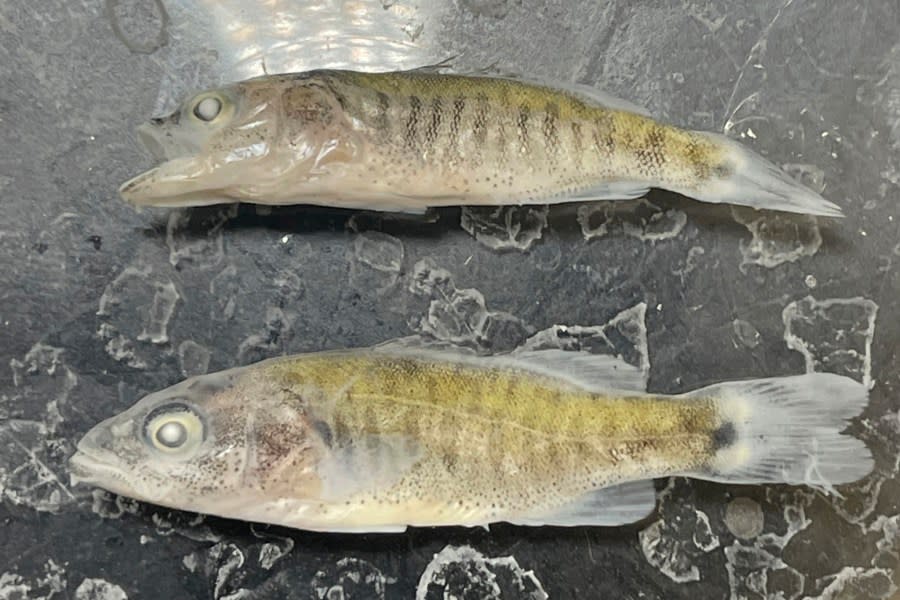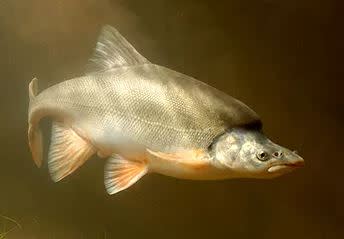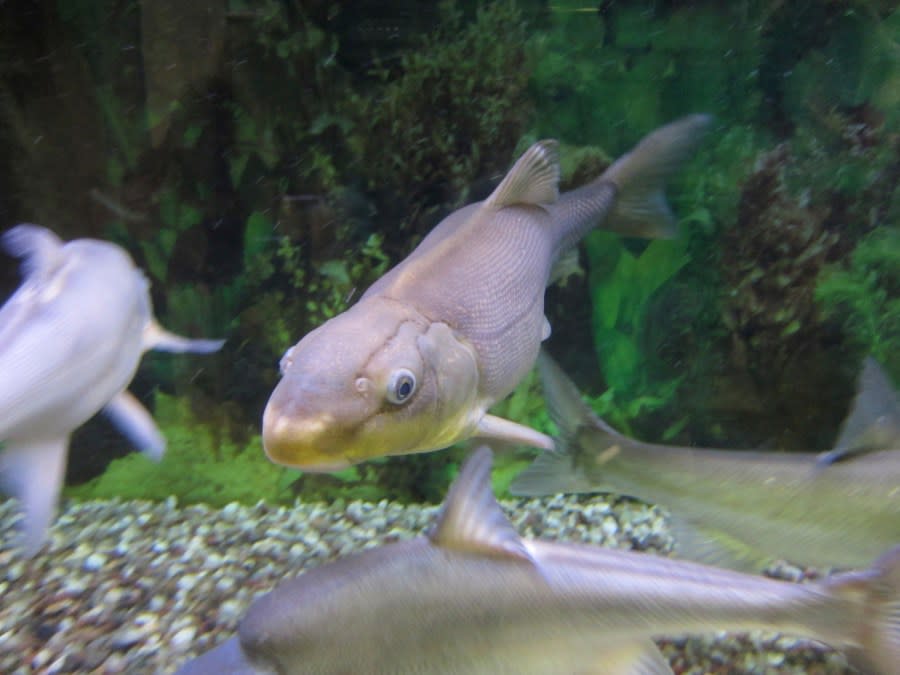Glen Canyon Dam ground zero for war on invasive smallmouth bass in Colorado River

LAS VEGAS (KLAS) — For people who love freshwater fishing, a smallmouth bass is one of the hardest fighters out there. They can grow up to 12 pounds and 27 inches in length.
But for a humpback chub — a threatened native fish in the Colorado River — they’re a nightmare. Smallmouth eat “anything that moves” according to one fishing website. That includes smaller fish up to about 35% of the smallmouth’s body length.
That’s a problem for the U.S. Bureau of Reclamation, the agency that controls dams along the Colorado River. When the 23-year drought took Lake Powell to about 25% full, smallmouth bass were finding their way through Glen Canyon Dam and they became a threat to the humpback chub.
Predatory bass species new concern for Colorado River water managers
“As the water elevation at Lake Powell has declined, the epilimnion, or upper layer of the lake where most fish reside, has become closer to the water intakes for Glen Canyon Dam, meaning that nonnative fish are now more likely to pass through the dam and downstream into the Colorado River,” according to Reclamation.

“The epilimnion is also the warmest, top-most layer of the reservoir and, when discharged downstream, increases the temperature of the river. These warmwater releases are creating ideal spawning conditions specifically for smallmouth bass, a predatory invasive fish species which poses a threat to the federally protected humpback chub and other native fish,” Reclamation said.
The agency announced Tuesday it is “initiating the formal process to develop future alternative operations at Glen Canyon Dam aimed at disrupting invasive fish from spawning downstream. The proposed flow options would potentially run through 2027.”

An estimated 60,000 humpback chubs live in the river below Glen Canyon Dam, with some near the Little Colorado River’s confluence with the Colorado River about 75 miles downstream of the dam. There’s also a larger population in the western Grand Canyon beginning about 175 miles downstream of the dam.
Reclamation will try a range of reservoir releases and analyze how they disrupt spawning for smallmouth bass. The variations will include different water temperatures and flow velocity combinations, according to a Tuesday news release.
The analysis will also look at higher flows released through Glen Canyon Dam and how they affect sediment downstream.
Wildlife competing with people for priority in plans for Colorado River’s future
The federal government has to take effects on wildlife into account as they formulate plans to operate dams. The humpback chub’s “threatened” status is a notch below the concern for three other fish species that are listed as “endangered” — the Colorado pikeminnow, the razorback sucker and the bonytail. Protections for those fish could shape the long-term strategy for managing the river.

“Reclamation has obligations under the 2016 Long-Term Experimental and Management Plan Biological Opinion to protect humpback chub,” Reclamation Upper Colorado Basin Regional Director Wayne Pullan said. “Humpback chub were recently downlisted from endangered to threatened. However, in the Grand Canyon, the number of sub-adults has been low enough to trigger taking additional conservation actions to bolster the population by increasing survival and growth.”
It’s a concern that reaches to the top of the agency.
“We will continue our work to protect the river and its native species to the best of our ability as we plan our operations of the river,” Reclamation Commissioner Camille Calimlim Touton said. “If smallmouth bass continue to spawn and establish below Glen Canyon Dam, there will likely be negative impacts to the humpback chub and other native fish species.”
Reclamation will host two public webinars — Oct. 18 at 5 p.m. and Oct. 20 at 11 a.m. — to provide information and receive comments. It’s part of the process in preparing a Supplemental Environmental Impact Statement (SEIS). More information is available at https://www.usbr.gov/uc/progact/amp/index.html.
For the latest news, weather, sports, and streaming video, head to KLAS.

